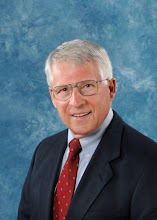As we move from an almost completely protection centric view of homeland security to one acknowledging the requirement for a broader paradigm that includes protection, prevention, response and recovery, it is a significantly positive step that the concept of community resilience seems to have forced its way into the new doctrine. Community resilience is at least now a subject of conversation. Unfortunately, the national view of communities and where they fit in the homeland security enterprise remains quite shallow and does not recognize the full potential of community resilience to be the foundation of a resilient nation.
National leader speeches as well as federal web sites and publications now include words on resilient communities in almost every discussion of national needs. But the words always focus on individuals and families very occasionally going further to acknowledge organizations and the private business sector. Communities are certainly about families and individuals. But they are far more than that. Communities are the foundations of our civil society – where individuals live, work, play, raise families and derive their values. Communities are complexes of built and social infrastructure. Most of the built infrastructure is privately owned and operated. Much of the social infrastructure resides in organizations independent of governmental structures. Communities create the wealth of the nation in their small businesses, retail outlets, housing markets and individual investments. Communities educate the nation, care for the nation’s physical and mental health and provide opportunities for faith and spirituality. And communities are inherently resilient.
Nationally, we need to understand and capture that complexity in our thinking about, planning for and encouragement of community resilience. Resilient communities must be the foundation of a national disaster resilience culture.
Disaster resilient communities would have the goal of rapidly returning to normal functioning after a disaster. They would do so using the full resilience continuum of prevent, protect, respond and recover appropriately within the community context. A nation of disaster resilient communities would meet this goal by working to protect, prevent and mitigate appropriate systems with a focus on eventual full recovery. They coordinate response to rapidly achieve recovery of normal community function and capacity and ensure that recovery is rapid, equitable, and leaves the community at least as strong as it was prior to the disaster.
Disaster resilient communities will have realistic expectations of outside assistance following a disaster based on comprehensive vulnerability and capability self-assessments and community developed plans and processes across the full resilience continuum. Nationally, federal systems must help nurture communities in developing resilience; help train them in concepts, tools, practices which develop, support, and enhance disaster resilience, and work with communities and regions in exercising their resilient characteristics. In return, resilient communities enhance the power of national programs by inculcating realistic expectations and by applying local power in an effective and efficient way.
Communities are the powerful, complex, resilient foundations of a resilient nation.
Subscribe to:
Post Comments (Atom)

No comments:
Post a Comment